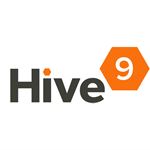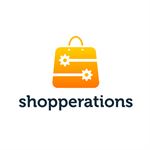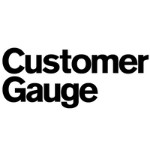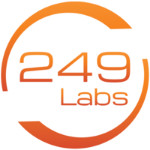In the ever-evolving world of business, one aspect remains constant: the need for thorough market analysis. Understanding the market you operate in, its potential for growth, and your position within it is essential to inform your business strategy, identify opportunities, and mitigate risks. A crucial part of this market analysis involves understanding three acronyms that are critical to your business’s success: TAM, SAM, and SOM.
TAM stands for Total Addressable Market, SAM is short for Serviceable Addressable Market, and SOM refers to Serviceable Obtainable Market. At first glance, these acronyms might seem like jargon, but don’t be daunted. In reality, they represent useful, practical concepts that help you make sense of your market position and strategize accordingly.
TAM (Total Addressable Market) is the total market demand for a product/service. SAM (Serviceable Addressable Market) is the portion a company can target. SOM (Serviceable Obtainable Market) is the portion it can actually capture.
In this blog post, we’ll delve into the definitions of TAM, SAM, and SOM, why they are important, and how to calculate them for your business. By the end of this post, you’ll have a clear understanding of these concepts and how to use them to inform your business decisions. Stick with us as we unravel the mystery of TAM, SAM, and SOM. Let’s dive in!

TAM, SAM, and SOM Definitions
Total Addressable Market (TAM)
The Total Addressable Market, often referred to as TAM, represents the entire revenue opportunity that’s the serviceable available market for a product or service if you achieved 100% market share. It’s essentially the total demand for the type of solution your business offers, regardless of your current ability to reach or service all potential customers.
For instance, if you’re a company that manufactures electric cars, your TAM would be all the potential car buyers in the world who could potentially switch to electric cars.
Serviceable Addressable Market (SAM)
The Serviceable Addressable Market, or SAM, is a subset of your TAM. It represents the portion of the TAM that you can realistically reach with your current business model, including factors such as geographic limitations and target customer demographics. Using the electric car business idea for example, your SAM might be potential electric car buyers in countries where your company has distribution capabilities.
Serviceable Obtainable Market (SOM)
Finally, the Serviceable Obtainable Market (SOM) is the portion of the SAM that you can realistically capture in the near term, considering factors such as competition and market trends. If you’re a newcomer to the electric car market, your SOM would be the potential customers you could realistically win over from established competitors in your operating regions.
By understanding these three metrics, you can create a realistic picture of market size of your market opportunity and better align your business strategy to capture it.
Action Item:
Take a moment to think about your TAM, SAM, and SOM. Start by defining the broader market (TAM) for your product or service. Then, consider the limitations of your current business model to identify your SAM. Finally, factor in your competition and near-term growth potential to estimate your SOM. This exercise will provide you with a clearer view of your market opportunity and help you plan your growth strategy more effectively.

Importance of TAM, SAM, and SOM
Once you have the definitions down, you might be asking, “Why do these metrics matter?” The importance of TAM, SAM, and SOM lies in their ability to offer actionable insights into your market, competition, and business growth potential.
Why TAM is Important
Understanding your Total Addressable Market provides a broad perspective on the market potential and scale of your business. It helps you dream big and set long-term goals. It also aids in identifying new market segments, exploring expansion opportunities, and convincing investors of your business’s potential. However, remember that while TAM is about the total market, it’s not a target. It’s a parameter for understanding the maximum potential reach of your product or service.
Why SAM is Important
SAM helps you stay grounded and realistic. It helps you define the portion of the market that is within your reach, given your current business model and capabilities. By focusing on your SAM, you can identify your core target customer base and refine your marketing and sales strategies to serve this market segment effectively.
Why SOM is Important
SOM represents your short-term sales target. It’s the portion of the market you aim to capture in the near to medium term. SOM is crucial for setting realistic sales and revenue goals, budgeting, and resource allocation. It also aids in monitoring your market penetration and assessing your performance against competitors.
Action Item:
Use the TAM, SAM, and SOM you’ve defined to evaluate your business’s growth potential. What does your TAM tell you about market expansion opportunities? Does your SAM align with your marketing and sales strategies? Is your SOM realistic and achievable, given your current resources and competition? This analysis will help you align your business strategy with your market opportunity and set realistic, achievable goals.

Calculating TAM, SAM, and SOM
Understanding how to calculate TAM, SAM, and SOM is essential for quantifying your local market opportunity. While these calculations will inevitably involve a degree of estimation, they provide valuable benchmarks for business planning and strategy.
Calculating Total Addressable Market (TAM)
The most common way to calculate TAM is through a bottom-up analysis. This involves counting the total number of customers in the market and multiplying that by the average annual revenue of each customer in the entire market itself. It requires a comprehensive understanding of the market and the average spending habits of the customers within it.
Calculating Serviceable Addressable Market (SAM)
To calculate SAM, you need to count all the potential customers that would be a good fit for your business within your TAM and multiply that number by the average annual revenue of these types of customers in your market. Essentially, you’re narrowing down the potential upside of your TAM based on the specific characteristics of your ideal customer and the reach of your current business model.
Calculating Serviceable Obtainable Market (SOM)
SOM calculation involves analyzing your revenue from the previous year in relation to total market demand and to your industry’s SAM for that year. This will give you your market share for the past year. You then multiply your last year’s market share by your current year’s SAM to estimate your SOM.
Remember, these calculations are based on estimates and assumptions, so it’s essential to use reliable data sources and regularly update your calculations as new data becomes available.
Action Item:
Take the time to calculate your TAM, SAM, and SOM using the methods described above. This will involve some market research to gather the necessary data, but the insights you’ll gain from these calculations are invaluable for your business planning and strategy. Remember to revisit these calculations regularly as market conditions and your business evolve.

Practical Applications
Now that you have an understanding of what TAM, SAM, and SOM are and how to calculate them, let’s look at how these metrics can be practically applied in business contexts. From product development to investor pitches, these metrics can drive strategic decisions and measure progress toward business goals.
Case Studies and Examples
Consider the case of a start-up company developing a new fitness app. The TAM would be all smartphone users interested in fitness worldwide. However, if the start-up is initially launching the app only in the U.S. and targeting millennials, the SAM narrows down to millennial smartphone users interested in fitness in the U.S. Further, considering competition and the time it takes to gain traction, the SOM would be a percentage of the SAM that the start-up aims to achieve in the first few years.
This practical example illustrates how TAM, SAM, and SOM can guide strategic decisions about product development, market focus, and growth expectations for existing businesses.
Industry-Specific Considerations
The way you define and calculate TAM, SAM, and SOM can vary depending on your industry. A B2B software company, for instance, might calculate TAM based on the number of businesses in a specific sector, while a consumer goods company might base it on demographic data. Always consider the unique characteristics and trends of your industry when conducting this analysis.
Action Item:
Reflect on how you can apply TAM, SAM, and SOM in your business context. Consider how these metrics can inform your product development, marketing strategy, and financial planning. Look at the companies in your industry or similar industries and try to understand how they might define their TAM, SAM, and SOM. This exercise can provide valuable insights into your market positioning and competitive landscape.
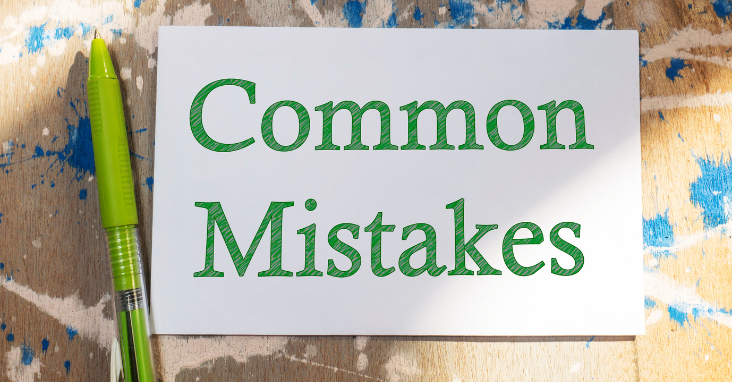
Pitfalls and Common Mistakes
Even with a clear understanding annual contract value of TAM, SAM, and SOM and how to calculate them, businesses can still make mistakes in their application. It’s essential to be aware of common pitfalls and learn how to avoid them.
Overestimating Your Market
One of the most common mistakes businesses make is overestimating their SAM or SOM. While optimism is a great trait, an overinflated perception of your accessible or obtainable market can lead to unrealistic growth expectations, misallocated resources, and disappointed stakeholders. Always ensure your SAM and SOM are based on realistic assessments of your business capabilities and market conditions.
Relying on Outdated Data
Market conditions can change rapidly, and so can your TAM, SAM, and SOM. It’s a mistake to rely on outdated market research or historical data without considering recent trends or changes global market make. Regularly updating your market research and recalculating your TAM, SAM, and SOM can keep your business strategy aligned with the current market reality.
Ignoring the Competition
It’s easy to focus on your potential customers and ignore the competition when calculating SOM. However, ignoring the competition can lead to an overestimated SOM and unrealistic sales targets. Always consider your competition when defining your SOM.
Action Item:
As you apply TAM, SAM, and SOM in your business, remain mindful of these common pitfalls. Revisit your calculations regularly, consider your competition, and keep your expectations realistic. This will help ensure that your use of TAM, SAM, and SOM is effective and drives informed strategic decision-making.

Recap and Next Steps
We’ve covered a lot of ground in understanding TAM, SAM, and SOM. We’ve learned what these acronyms stand for, why they matter, how to calculate them, and how to apply them in practical business contexts. We’ve also discussed the common pitfalls to avoid when using these metrics.
Recap
TAM: The Total Addressable Market represents the total demand for your product or service in the market.
SAM: The Serviceable Addressable Market is the portion of the TAM that you can realistically reach given your current business model and capabilities.
SOM: The Serviceable Obtainable Market is the portion of the SAM you aim to capture in the short term, considering competition and market trends.
These metrics are invaluable tools for business planning and strategy, offering insights into your market opportunity, competition, and growth potential.
Calculating TAM, SAM, and SOM involves market research and careful analysis of your business capabilities and market conditions.
Next Steps
As you move forward your business plan, remember that TAM, SAM, and SOM are dynamic metrics that should be recalculated and reassessed as your business grows and market conditions change. Continually apply these insights to inform your business strategy, from product development to marketing to investor relations.
Action Item:
Reflect on everything you’ve learned about TAM, SAM, and SOM. How will these insights shape your business strategy? What changes might you need to make based on your new understanding of your market opportunity? Jot down your thoughts and discuss them with your team. This reflection and conversation will help ensure you’re leveraging TAM, SAM, and SOM effectively to drive your business growth.

tam sam som – FAQ
Lastly, it’s worth addressing some common questions about TAM, SAM, and SOM to clear up any remaining confusion and provide a deeper understanding of these concepts.
What does TAM, SAM, and SOM stand for?
TAM stands for Total Addressable Market, SAM stands for Serviceable Addressable Market, and SOM stands for Serviceable Obtainable Market.
What is TAM?
TAM refers to the total demand or revenue opportunity available for a product or service if there were no competitors and all potential customers in the market were reached.
What is SAM?
SAM represents the portion of the TAM that your business can realistically target and serve. It considers factors like geographical constraints, industry limitations, and customer segments that align with your product or service.
What is SOM?
SOM represents the actual market share or revenue your business expects to capture within the SAM. It considers factors like competition, market penetration, and your business’s ability to acquire and retain customers.
Why is TAM SAM SOM analysis important?
TAM SAM SOM analysis helps businesses assess the market potential, define target segments, and set realistic goals. It assists in estimating market size, understanding the competitive landscape, and making informed business decisions.
How can I calculate TAM, SAM, and SOM?
TAM, SAM, and SOM calculations typically involve gathering market research data, analyzing industry reports, conducting surveys, and applying segmentation strategies. The specific approach may vary based on your industry, product/service, and available data.
Can software tools help with TAM SAM SOM analysis?
Yes, there are software tools available that can assist with TAM SAM SOM analysis. These tools can automate data collection, perform market research, and provide insights for estimating market size and segmentation.
Are TAM SAM SOM figures static or dynamic?
TAM SAM SOM figures are not fixed and can change over time. They are influenced by factors such as market growth, competition, technological advancements, and shifts in customer preferences.
Can TAM SAM SOM analysis be used for startups?
Yes, TAM SAM SOM analysis is particularly useful for startups. It helps them understand the market potential, identify target customers, and evaluate their growth opportunities. It also assists in attracting investors by demonstrating the market size and the business’s potential within it.
What if my business operates in several markets? How should I calculate TAM, SAM, and SOM?
If your business operates in several markets, it’s best to calculate TAM, SAM, and SOM separately for customer segments in each market. This will provide a clearer picture of your growth potential and competitive landscape in each market and help you tailor your strategies accordingly.
Can I use TAM, SAM, and SOM for a new product or service?
Absolutely! TAM, SAM, and SOM are especially useful when launching a new product or service. They can help you gauge the potential demand, identify your target market, and set realistic sales targets.
How often should I recalculate TAM, SAM, and SOM?
There’s no hard and fast rule, but it’s a good practice to recalculate these metrics at least annually. However, if there are significant changes in your business or market conditions (such as a new product launch, a market shift, or a global event like a pandemic), you might need to reassess these metrics sooner.


